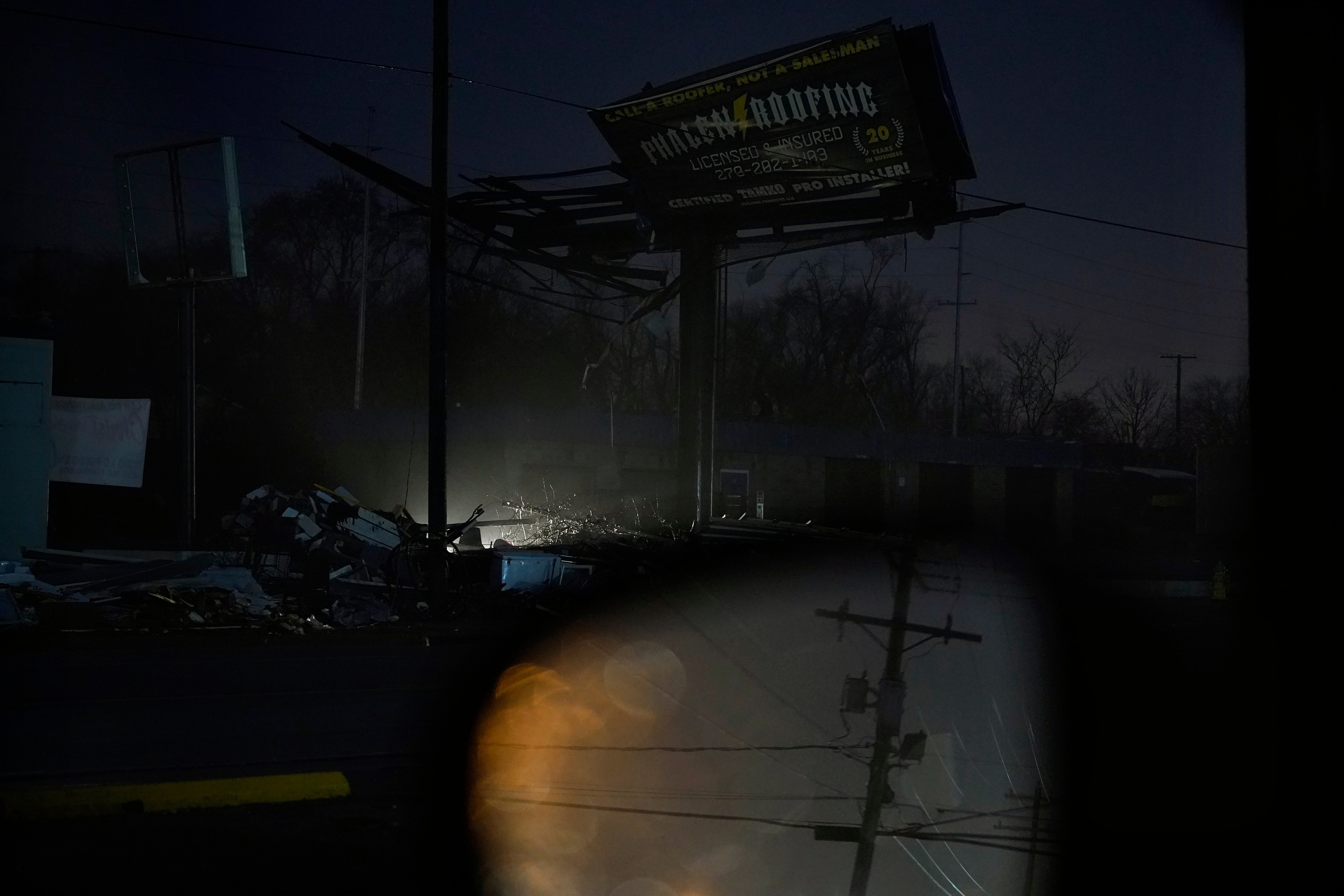Holiday horror: AP photographer covers hometown twister
An Associated Press photographer made a trip home for the holidays, but not just to celebrate

Your support helps us to tell the story
From reproductive rights to climate change to Big Tech, The Independent is on the ground when the story is developing. Whether it's investigating the financials of Elon Musk's pro-Trump PAC or producing our latest documentary, 'The A Word', which shines a light on the American women fighting for reproductive rights, we know how important it is to parse out the facts from the messaging.
At such a critical moment in US history, we need reporters on the ground. Your donation allows us to keep sending journalists to speak to both sides of the story.
The Independent is trusted by Americans across the entire political spectrum. And unlike many other quality news outlets, we choose not to lock Americans out of our reporting and analysis with paywalls. We believe quality journalism should be available to everyone, paid for by those who can afford it.
Your support makes all the difference.I’ve driven home to western Kentucky for the holidays more times than I can count. No matter the direction I’m coming from, it’s always the same: long stretches of highway that lead to a place I’ve known since I was a little girl.
But not this year. Everything is different after a tornado ripped open a hometown full of happy memories of friends and family gatherings. The twister was part of an unusual mid-December swarm of deadly storms that leveled entire communities in the South and Midwest claiming 90 lives in five states, including 16 in Bowling Green.
My aunt and cousin, instead of exuding their usual holiday excitement, relate the fear they felt as tornado sirens wailed and they watched a huge black cloud approach.
The devastation is visible everywhere: Church sanctuaries where worshippers would have gathered for Christmas Eve services are split apart. Piles of splintered pines and shattered lumber hide holiday decorations, yet somehow a decorated Christmas tree still stands inside a brick house that’s missing its roof.
About 130 miles (209 kilometers) away in hard-hit Mayfield, a plastic statue of the Virgin Mary hands clasped in peaceful joy, stands over another yard littered with mangled plywood. Nearby, an empty hole in a wall marks the spot where a theater's movie screen used to be.
When I was little, my mother and I lived in a mobile home a few miles from the heart of Bowling Green. One year, perhaps when I was around 6, she frantically packed me into our car and started driving after a tornado siren began screaming.
I remember her tucking me behind the driver’s seat after we pulled off the road. I felt the car shake and heard the wind carrying away debris as I held my hands over my head. Mom was scared, and that wasn't like her.
We both survived that day. But now, those memories overwhelm me as I see the damage that another bout with tornadoes has inflicted on Kentucky. I’m a professional — I’ve covered a lot of other tornadoes working as a photographer with The Associated Press. But I still can’t believe it happened here. At home.
I didn’t know exactly what to expect during the five-hour drive to Bowling Green from Atlanta where I now live with my family. Things seemed normal, and then they weren’t.
Lights are on in some places, but it’s pitch black in others where neither power crews nor generators have reached. Rains pelts the windshield, but each steady sweep of the wipers reveals a city broken and full of debris.
The smell after a tornado is overpowering: The sap from broken trees and natural gas spewing into the air from fractured lines mixes into a weird, signature fragrance. It's no different this time.
It’s easier to walk than drive through the hardest-hit areas, but my feet sink into wet mud as I make my way down the bypass, near businesses I remember both from childhood and my days as a student at Western Kentucky University.
Firehouse Pizza was destroyed, and the sign now hangs just above the ground. What once was Judy s Castle, a restaurant where we often ate, is missing at least one wall, and the Cardinal Motel next door is gone: The only recognizable thing that remains is a big statue of a red bird. Oddly, not far away, Great American Donut shop — everybody calls it “Gads” — is fine and open for business.
The remaining part of a plastic sign that was shattered by the winds carries a message for the Bowling Green community: “BG Strong." At a pedestrian bridge that's a popular spot for family photos and date nights, fog rises between the Barren River's banks, one of which is littered with damaged homes and the other of which was relatively untouched. I hope both sides are OK next time I go home.
My family is safe, and I’m grateful. While my relatives are wrapping presents for their kids, others nearby are wrapping their roofs with plastic and tarps in the hope of preventing damage from the next rainstorm that comes through town.
While I can document what happened, I can’t explain it. My younger cousin believes she can, though.
“We were protected by God for sure,” she said.